
The Project Management Tool gives an international view of your undertaking portfolio to better control and display tasks and undertaking sources. PMT is software built on the Salesforce platform that allows business enterprises to manage the projects through programs, levels, and tasks.
Project Management is not everyone’s cup of tea, however with superior technologies like Salesforce, handling the team does not appear too difficult. Several functions of the modern Project Management technologies nearly cowl any project manager’s number one roles and responsibilities, helping them perform their process with greater efficiency. So, modern Project Management technologies have made lifestyles less difficult for project managers in dealing with a big mission with tremendously consumer-friendly programs.


Salesforce has been recognized as the leading modern organization globally in more than one instance. We continuously get asked how we will do it. Two of the most effective methods we stay modern are our Agile attitude and the usage of our business. Salesforce has been practicing the Agile manner for over six years. At the core of our Agile procedure is the Agile Accelerator. We call it the Grand Unification System (GUS) internally. Our single source of reality offers us team visibility throughout the corporation and facilitates fast collaboration on tasks. We’ve taken the maximum popular capabilities in GUS and packaged it up for our clients.
Agile Accelerator is a Managed Application available free within the App Exchange. It is used for handling agile product development in Salesforce. A complete project team can track their assignment info like Epics(Features), User Stories, Bugs assigned to them and perform accordingly from Salesforce. The Agile Accelerator App secures our records effectively and incorporates different Salesforce apps such as Sales Cloud and Service Cloud. We can connect user stories & bugs to CRM cases and money owed. Agile Accelerator can aid within the Salesforce1 platform and integrate with the different objects.
4 out of 5 stars
There are various Agile steps:
Create and Manage team
The first step to using agile is to create a group. The team of Agile can have members like architects, programmers, software engineers, analysts, UI designers, QA experts, and testers. After the group is created, you have to assign the roles and responsibilities to the team members.
Create Product Tags
In agile, the product tags organize the teamwork logically. We can utilize the product from the “product tag” and the “team tag” tab.
Create Sprint
After the team has been created, we should make a sprint for organizing the project work in a very effective manner. We can create up to one-month duration into that.
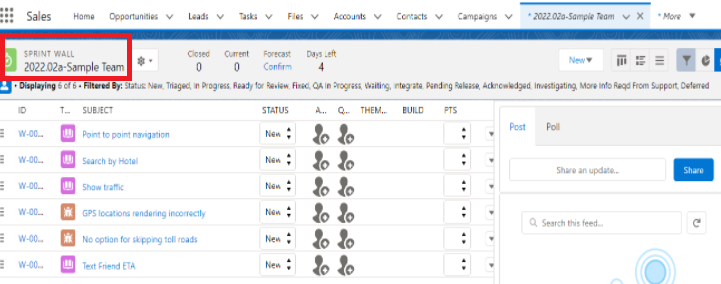
Create Salesforce Epic
An Epic is a vast user story that can’t be completed within a single sprint, even if it can take more than a sprint to complete. As Epics is for massive projects, the Agile team divides them into smaller and manageable user stories.
Example: We can organize the user stories with an IOS theme and android theme If we create a mobile application.
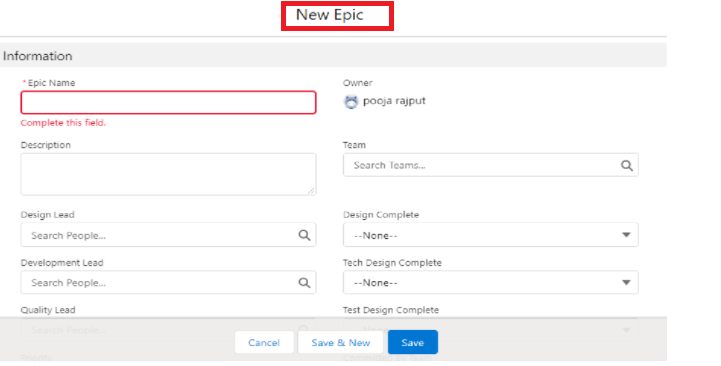
Create Themes

We can easily group the same user stories using the themes. It can also refer to tags. Every user story is assigned to the theme, and we can find the related stories.
Create Work Records
After creating the sprints, we can now start to add work records. There are three types of work records: user stories, bugs, and Investigation. We can create the user stories and bugs on the sprint virtual wall by using the work tab. You can create a user story from work.
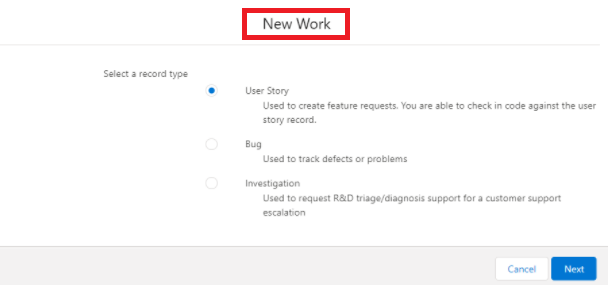
Relate a case to the work record
Now, we can add the custom case field known as “work” to the Case page layout. We can link the cases and work records by adding the field in the Case object and seeing the case information while viewing the work record. There is no requisite to open the cases separately.

Create a task
We can assign individual team members whenever we create a user story. When more than one person is working on a user story, It helps to track the progress for each story.

Based on critical features, Salesforce has a definite edge on parameters like Reliability, Availability, Performance, training (both online and offline), ease of implementation, scalability, ROI, and pricing compared with the present market leader JIRA.
On AppExchange, You don’t have to pay any amount for Agile Accelerator. It is free of cost. So you don’t think twice about using it.
The Agile Accelerator is a managed utility available free within the app exchange. This Application enables the entire team to control & monitor the project status and popularity without difficulty, and it’s far fully secured because the project as the whole flow and records are maintained inside the salesforce Organization.

The Checklist acts as your reminiscence so that you do not need to worry about remembering every task required to finish a guided process. Your organization could be able to implement a chain of checkpoints at distinct Opportunity tiers to ensure that your users are entering smooth statistics that are standardized and entire. The Checklist’s files feature offers you the ability to add a report and fix it to a specific task. Uploading documents can be required or optional to proceed to the next task.
5 out of 5 stars
These are the main features of the Checklist
Manage Tasks and Instances
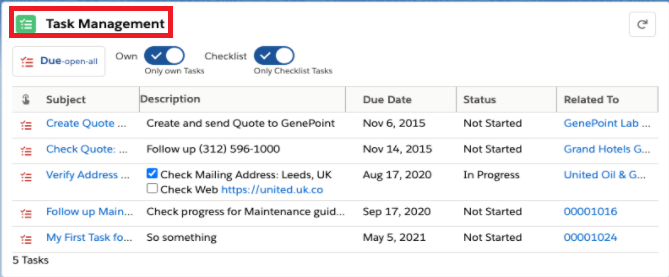
Check Task Status and Progress
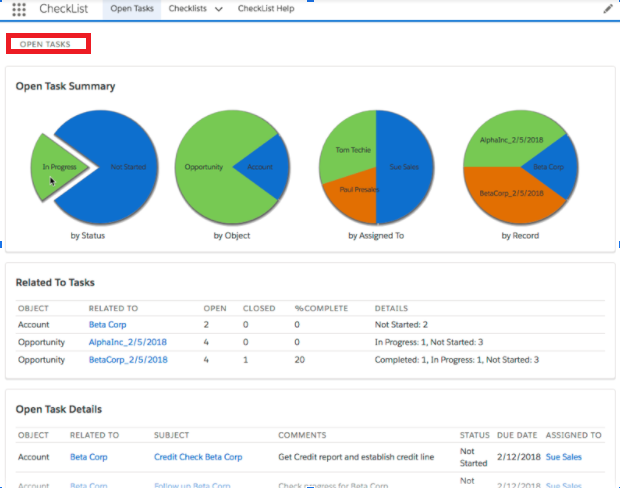
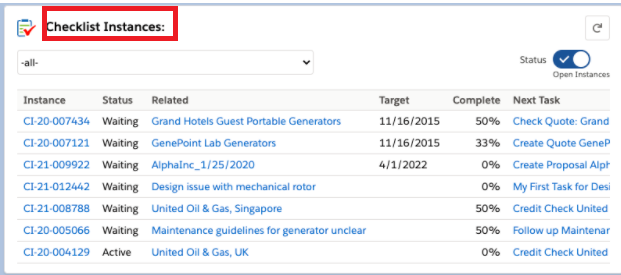
Checklist for Processes Checklists can be easy task lists - for a single or a couple of users. Add dependencies, developing a workflow.
Now, you can complete Tasks within the proper collection. The Task Status is automatically updated from Waiting to Not Started for the established tasks.
You create a parent checklist item object. This item consists of the following fields:
You create a child checklist item object. The checklist item object will capture the actual checklist objects inside the checklist. This might be the child of the parent checklist item. This object could have the following fields:
With these parent-child objects, you’ll be able to arrange the objects into numerous sorts of checklists. This is a different preparation method than the primary one. But you still want to go into the checklist items manually each time. What if many such checklist items are already standardized, and you need to create such items automatically towards an account while a new account is created?
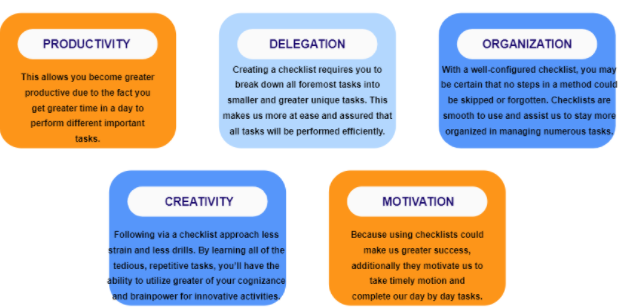
In comparing other tools, Checklists prevent mistakes and are widely used to achieve repeatable, reliable outcomes. Checklist for Salesforce is a local Salesforce package boosting the creation of Salesforce Tasks. For single or multiple users, Checklists can be simple Task lists.
It is a paid tool on app exchange. The average cost of the tool is USD 25 per user per month.
Checklists are a template to create Salesforce Tasks for you and all your tasks to perform. Checklists may be trendy or for unique Objects (e.G. Accounts, Opportunities) despite positive situations (e.g., Accounts with a warm rating). You can add Tasks manually - or routinely (e.g., While a new Account is created or the Opportunity is closed). Microtasks (checklist within tasks) reduce the number of tasks with step-by-step steering. The created tasks can be active all at once - or activated when prerequisite duties are completed.

With Asana for Salesforce, your teams can do the following:
3 out of 5 stars
To configure the Asana app into Salesforce after installing it from Appexchange, the steps are:
Link your Asana account with Salesforce Click sign in to create your Asana account or login with your Asana account as shown in the screenshot.
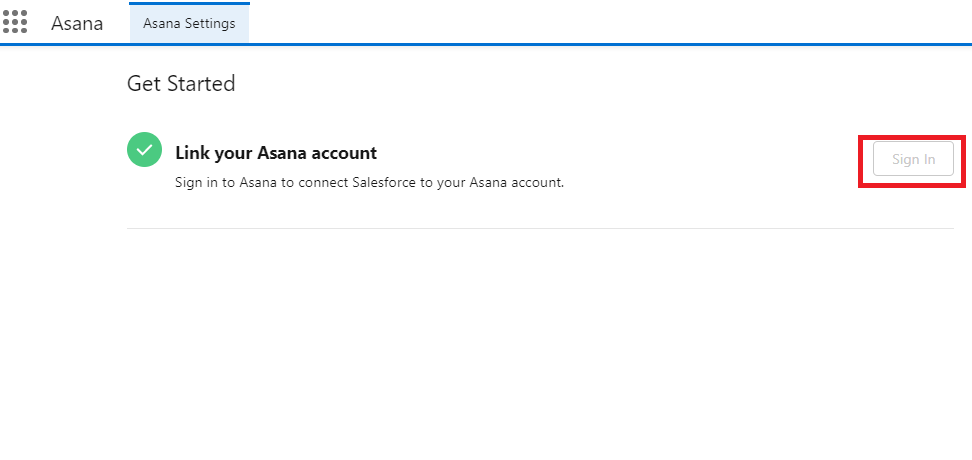
Add your Asana component (already present in your package) to your Opportunity Record page. Click on Add component button as shown in the screenshot.

Create an Opportunity Record Page from App builder, drag and drop the Asana component into your record page, and save it as shown in the screenshot.
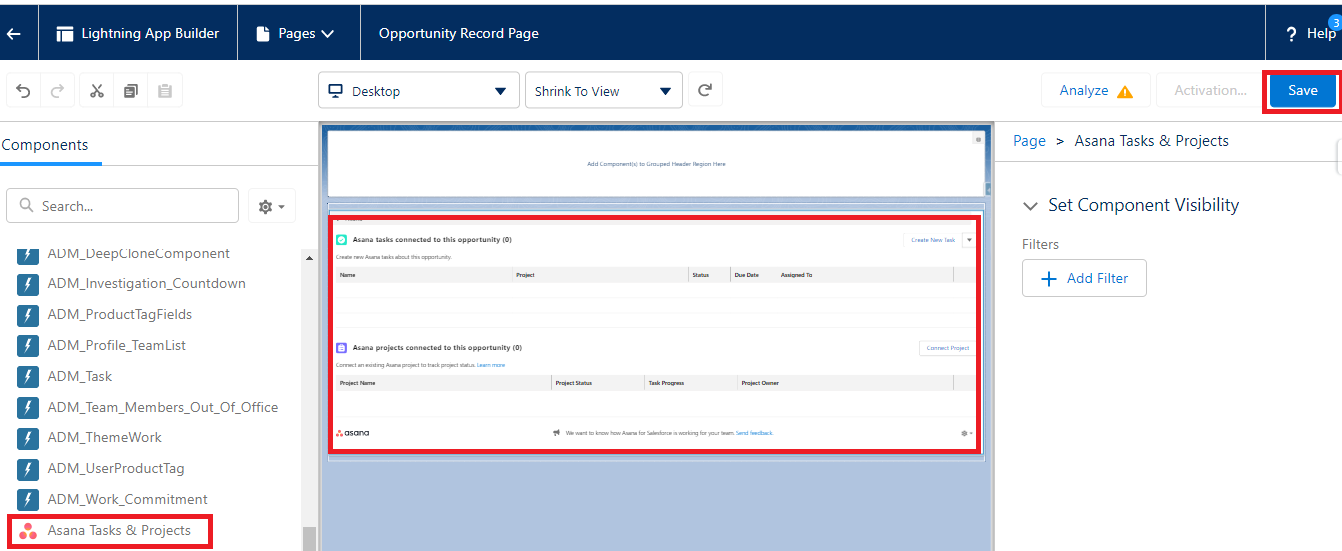
Go to the Opportunity Record page, showing this page type.
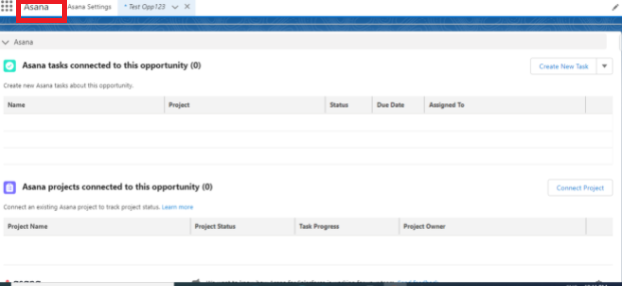
You can create the new Asana task and connect the project, as shown in the screenshot.

After clicking on Create New Task, you will get this screen to create your Task.
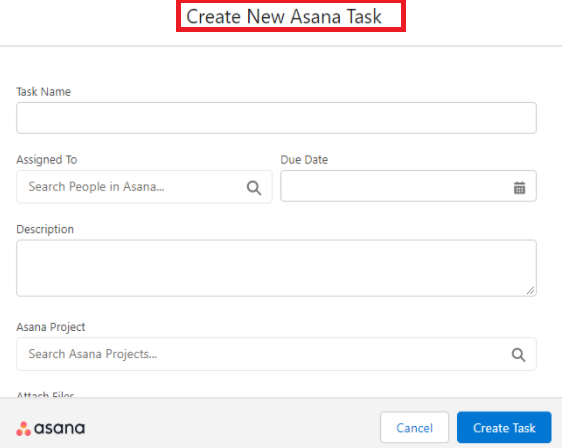
And for connecting the project, click on Connect Project button as shown in the screenshot-
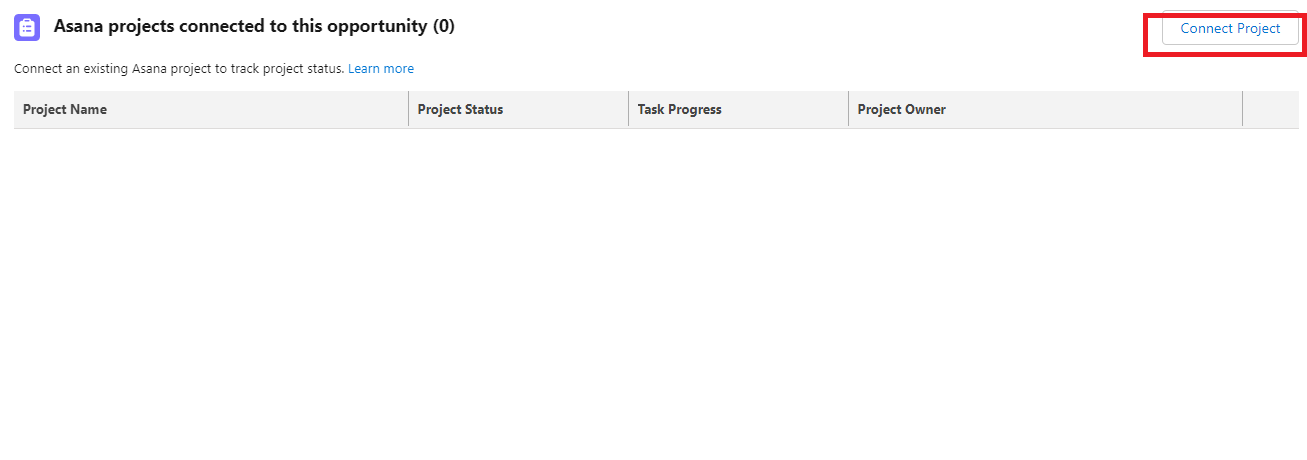
After this, you will get the screen to connect the project as shown in the screenshot-

2. Automating the hand-off between the post-Sales/Implementation teams and Sales-
There are five interfaces of Asana.
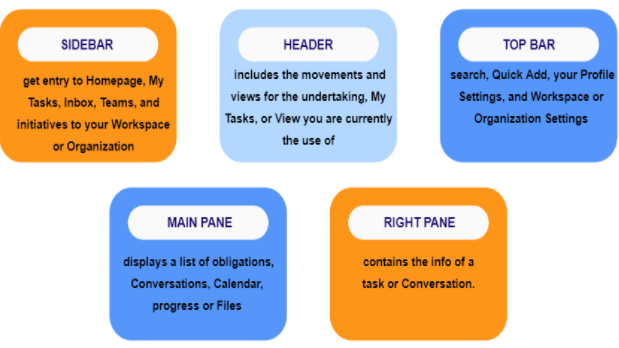
My Tasks - Your organization to arrange and prioritize your tasks and project work each day.
Timeline - See how the pieces of your task are in shape collectively and keep works on track as things alternate.
Workload - Get an actual-time evaluation of how busy group contributors are across initiatives and rebalance works to maintain initiatives on target.
Portfolios - Monitor the status of all of your tasks in real-time so that you can hold initiatives on target and record updates for your team.
Goals - Set organization desires in Asana so that they’re related to the work that supports them, and you could oversee development.
Inbox - Get automatic updates about the projects, conversations, and tasks that be counted to you.
Dashboards - Get real-time task facts in one vicinity. Customize charts to look where work may be blocked or astray.
Accessibility - All groups may be successful in Asana. Learn extra approximately our accessibility functions.
Calendar view - See any listing of tasks on a Calendar to get a clear view of while tasks are due.
Files view - Find the challenge documents you need speedy in a gallery view with all the task’s attachments.
Advanced seek - Run reviews are primarily based on unique criteria that are maximum crucial for your group. Save your reviews to see work across initiatives, assignees, custom fields, and extra.
Teammate view - Understand teammate workloads using viewing tasks assigned to them. You’ll be able to see something that’s been shared with you, or that’s publicly available for your Organization.
Project export - Export to CSV and JSON if you want to slice and cube your statistics.
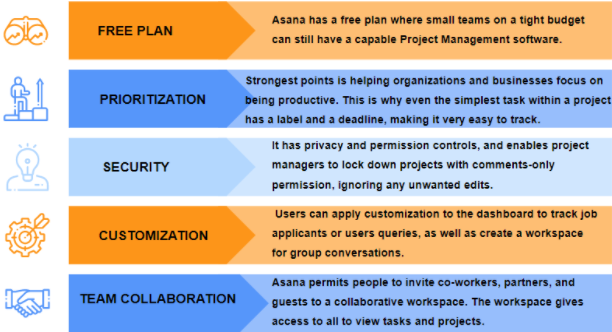
You don’t have to pay Asana on app exchange. It is free of cost.
It empowers sales reps to request support teams like legal and marketing via Asana tasks without leaving Salesforce. It allows sales reps to track the progress of Asana tasks within the context of specific Salesforce opportunities.

Loopio is the leading Response Management software that helps businesses supercharge and scale their response process for RFPs, Security Questionnaires, RFIs, and more. Our platform is beautifully designed and thoughtfully built, making it the easiest RFP Response solution to market.
5 out of 5 stars
Kick-off Loopio Projects from Salesforce:
Make it easy and quick for sales representatives to hand off RFPs to your proposal team by having them start projects right from a Salesforce Account or Opportunity.
Track RFP Progress:
Improve visibility into how your RFPs are progressing and what outstanding tasks are remaining. Never miss a deadline again!
Auto-Populate Project Fields:
Automatically map over relevant details like Product Line and Deal Sizedirectly from Salesforce. This ensures that there are no discrepancies in Project details and that writers have the data they need to respond.
Installation of Loopio
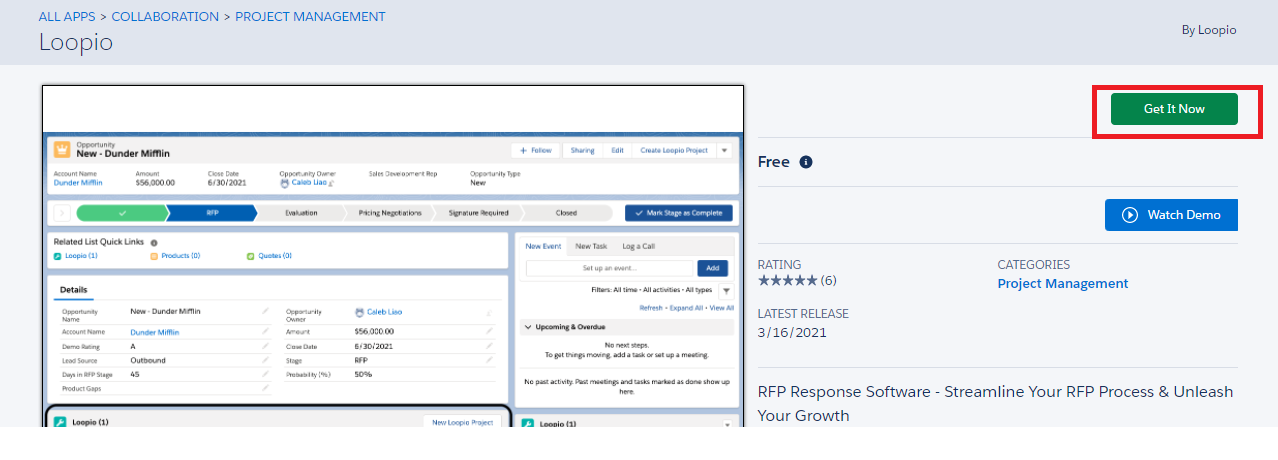
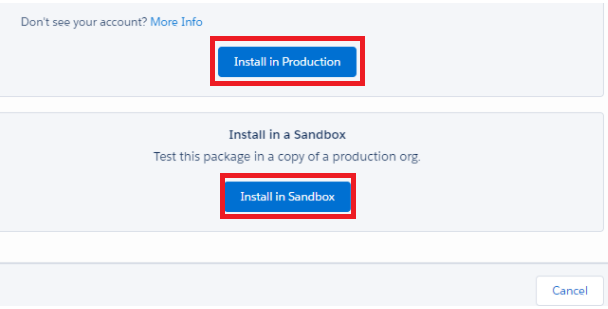
Connecting the Loopio


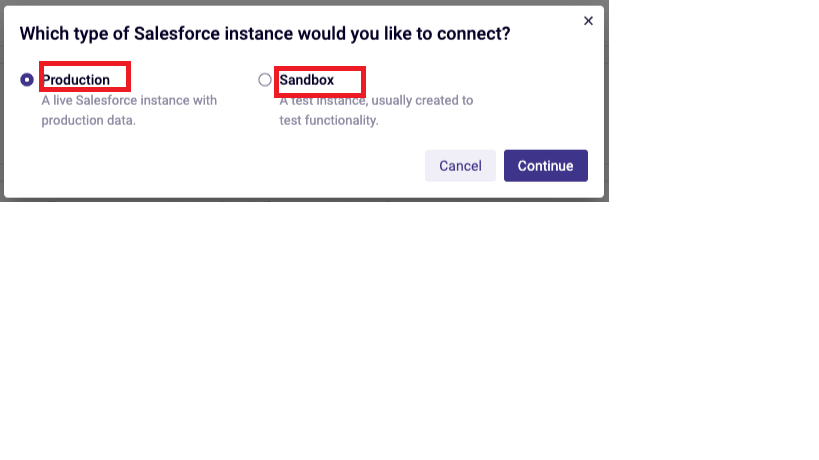
This will navigate you to a Salesforce page to sign in. Signing in will grant Loopio permission to connect to your Salesforce occurrence.
After signing in, you will be navigated back to Loopio & shown a success message.
Configuration of Loopio
Now the Loopio Object is connected, you can configure the settings. Without this step, it will not show in your Opportunities or Accounts.

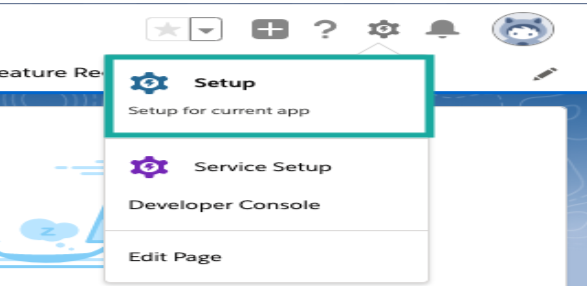
a. Using the Quick Find, if you’re using Opportunity, scroll in the Objects Manager list, select Opportunity or type Opportunity, and select Opportunity.
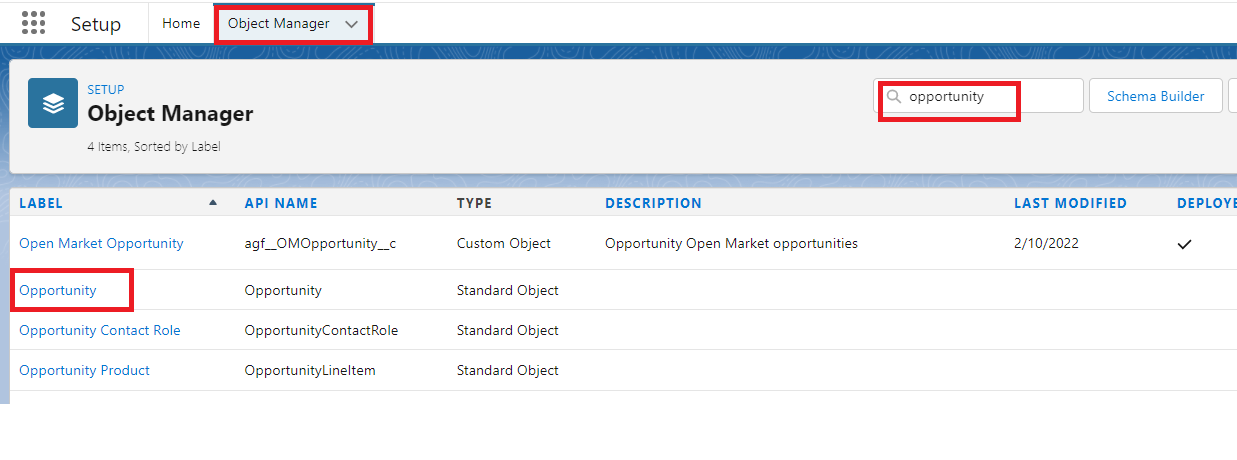
b. If you’re using Account, scroll in the Objects Manager list and select Account or type Account and select Account.
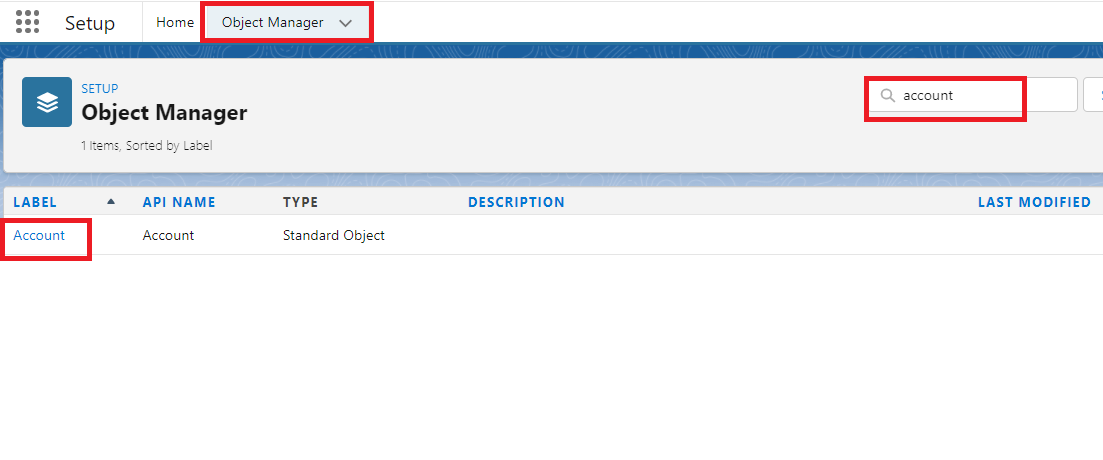
Select Page Layouts from the left navigation bar.

In the Elements, Selection panel select Related Lists.
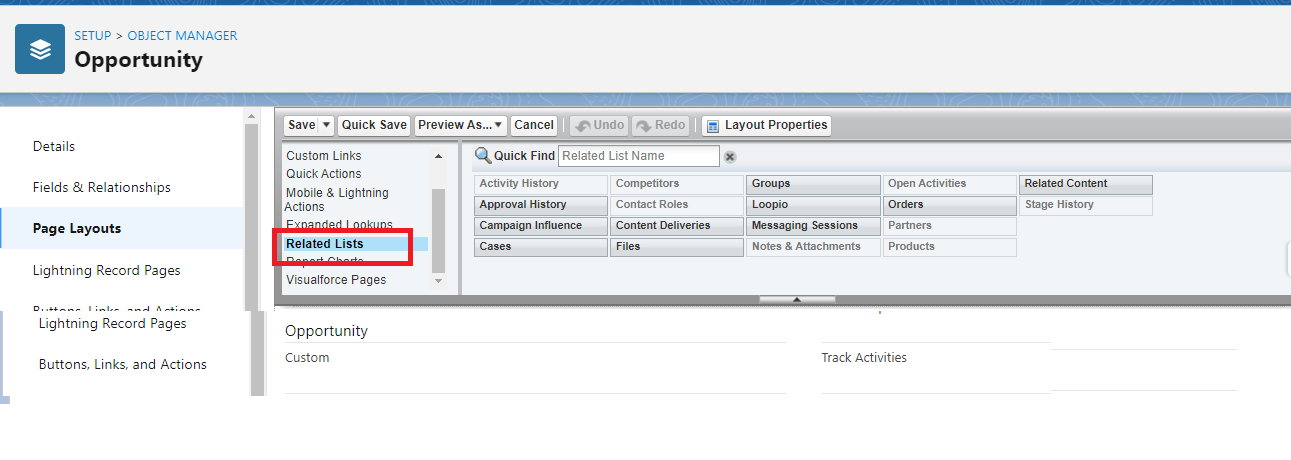
If you would like to Add the Loopio Object, select the page layout.
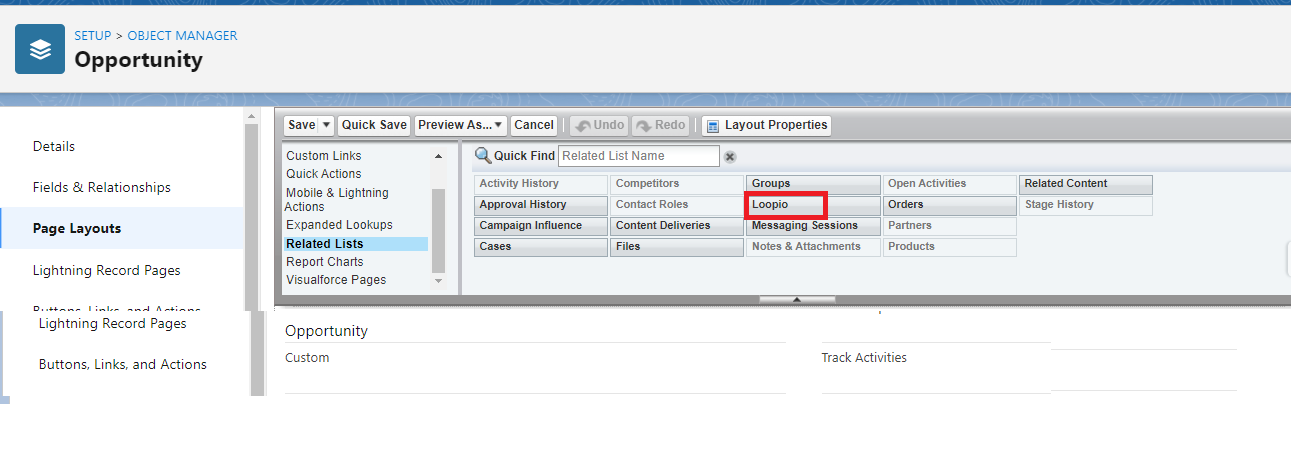
Click and drag the Loopio tile into the Related Lists below.
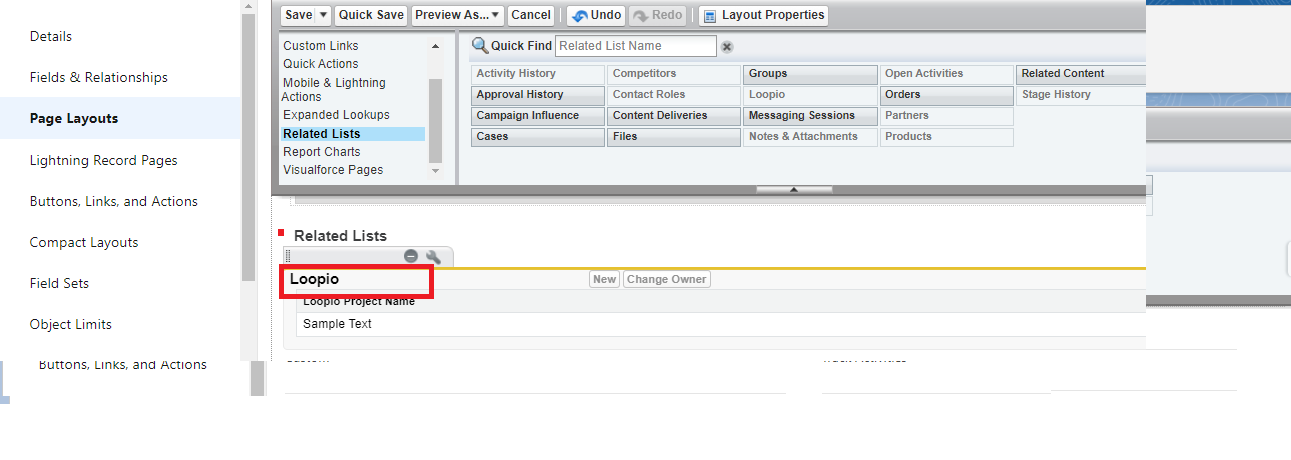
Click the wrench icon, Once the Loopio Object is on the page.

Move all the columns you want to make available into the Selected Fields list.
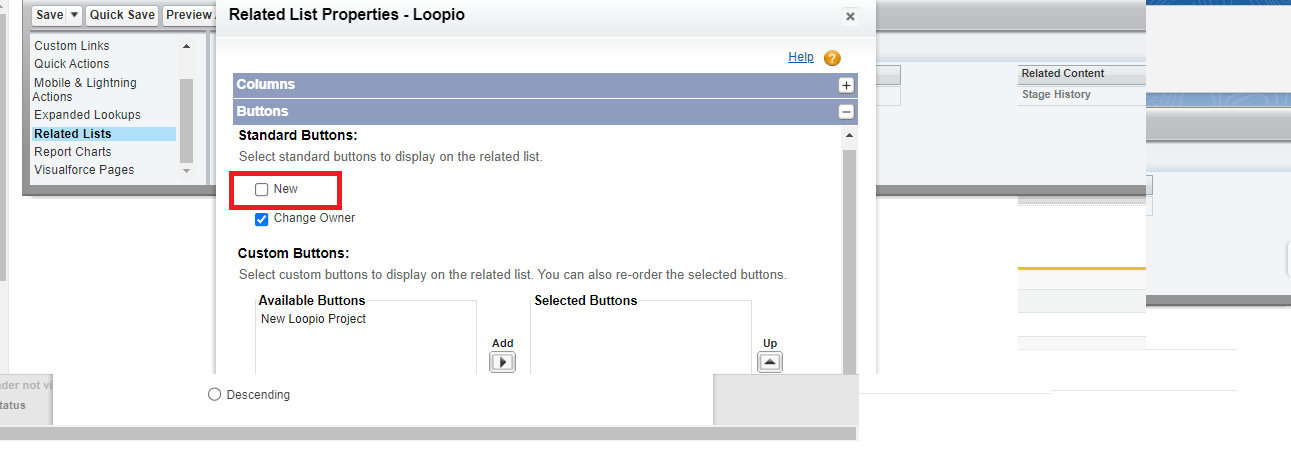
Recommended Selected Fields:
Open the Buttons section by clicking the plus icon in the exact modal; after all, your columns have been added
Uncheck the “New” box, and drag and drop the New Loopio Project button to the Selected Buttons column.

Click on OK and save the page layout changes. The Loopio Section will now be shown in that Page Layout.
These are the key benefits of Loopio:

On app exchange, You don’t have to pay Loopio as it is free of cost.
By connecting Loopio with Salesforce, you’ll streamline your response process, unlock valuable RFP insights and improve visibility for your organization.
The proof is in delivers results:
If we compare Agile Accelerator, Loopio, Checklist, Asana, then we can say that the Agile Accelerator app is better because A complete project team can track their tasks info like Epics(Features), User Stories, Bugs assigned to them and can perform accordingly from within Salesforce. The Agile Accelerator App secures our records effectively and incorporates different Salesforce apps such as Sales Cloud and Service Cloud. We can connect user stories & bugs to CRM cases and money owed. The Agile Accelerator can aid within the Salesforce1 platform and integrate with the different objects. The thing that makes it more suitable and convenient to use while having the edge over other Project Management Tools is that it has a 5-star rating on App-Exchange, and of course, it is free of cost.
The Agile Accelerator App secures our records effectively and is completely incorporated with different Salesforce apps such as Sales Cloud and Service Cloud. We can connect users. story. & bugs to CRM cases and money owed. The Agile Accelerator can aid within the Salesforce1 platform and integrate with the different objects.
The Checklist’s files feature allows you to add reports and fix them to specific tasks. Uploading documents can be required or optional to proceed to the next task. Through Checklist, you don’t know they need to remember tasks daily.
Allow sales reps to track the development of Asana tasks within the context of unique Salesforce possibilities. Auto-generate tasks and use customizable challenge templates to move clients via the funnel as they attain key opportunity stages. Automate while Asana tasks are created through Salesforce’s powerful Process Builder.
Automatically map over relevant details like Product Line and Deal Size directly from Salesforce. This ensures no discrepancies in Project details and that the writer has the data they need to respond to. Loopio is the top Response Management software helps businesses Supercharge and scale their response process for RFPs, Security Questionnaires, RFIs, and more.
| App Name | Agile Accelerator | Checklist | Asana | Loopio | |
| AppExchange Rating | 4/5 stars | 5/5 stars | 3/5 stars | 5/5 stars | |
| Pricing | Free | $ 25 per user / per month. | Free | Free |
You can add up to 5 agencies to your list and contact all of them at once. This will increase your chances of finding the right provider for your needs.